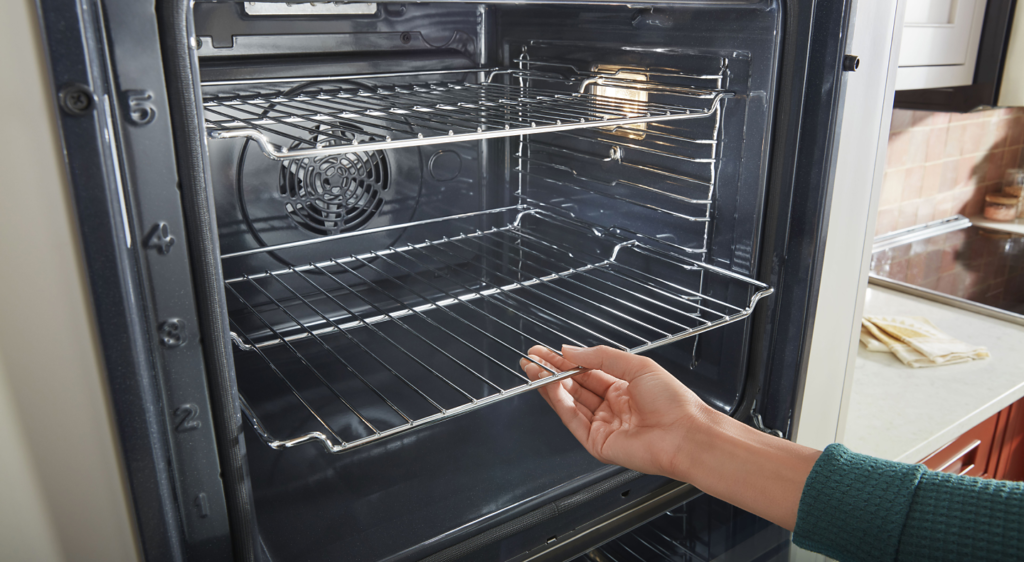A properly functioning oven is essential for cooking meals evenly and efficiently. When your oven starts heating unevenly, it can be frustrating. Dishes may come out half-baked, burnt on one side, or undercooked in the middle. Several factors could cause uneven heating, and troubleshooting the issue can save you from the inconvenience of ruined meals. For expert advice on addressing these problems, Appliance Repair Bronx NY offers insights into common oven issues and solutions to keep your kitchen running smoothly.
Common Causes of an Oven Not Heating Evenly
Uneven heating can be caused by various issues, some of which can be easily fixed at home, while others might require professional help. Below are the most common reasons for uneven oven heating.
1. Faulty Heating Elements
In electric ovens, the heating elements are responsible for generating heat. These elements—one located at the top (broil element) and another at the bottom (bake element)—work together to heat your oven. If one of these elements is damaged or malfunctioning, it can result in uneven heating.
- Signs of a Faulty Element:
- Visible damage such as cracks or burn marks on the element
- Only the top or bottom of the oven is heating up
- Food is cooking unevenly despite following recipes accurately
2. Inaccurate Oven Temperature
Sometimes, the oven’s thermostat may be malfunctioning or not calibrated correctly, which causes the oven to not reach the desired temperature. If the thermostat isn’t functioning properly, it can lead to inconsistent heat distribution.
- How to Check:
- Use an oven thermometer to compare the internal temperature with the one set on the oven’s control panel.
- If there’s a significant difference, you may need to recalibrate or replace the thermostat.
3. Poor Air Circulation
Your oven relies on air circulation to distribute heat evenly throughout the cavity. If there are issues with airflow, certain areas of the oven may not cook as efficiently as others. Poor circulation can be caused by blocked vents, overcrowded racks, or an oven fan that’s not working properly.
- Tips to Improve Air Circulation:
- Avoid overcrowding the oven with pans and trays that block airflow.
- Ensure the oven fan (if your model has one) is functioning correctly.
- Use the correct rack placement for the dish you’re cooking.
4. Damaged or Worn Oven Gasket
The oven gasket is the rubber or fiberglass seal located around the oven door. Its primary purpose is to trap heat inside the oven. If the gasket is damaged or worn, heat can escape, causing temperature inconsistencies and uneven cooking.
- Inspecting the Gasket:
- Check for cracks, tears, or wear in the gasket.
- Run your hand along the edges of the door while the oven is on to feel for heat escaping.
- If the gasket is damaged, replace it to restore proper heat retention.
How to Troubleshoot an Oven That’s Not Heating Evenly
If your oven is giving you trouble, there are several steps you can take to troubleshoot and potentially fix the issue before calling a professional.
1. Test the Heating Elements
Start by testing the heating elements in your electric oven to ensure they’re functioning correctly.
- How to Test:
- Preheat the oven and observe the heating elements. They should glow red when functioning properly.
- If one or both elements are not glowing, they may need to be replaced.
- You can purchase a replacement element and follow the manufacturer’s instructions for installation.
2. Recalibrate the Oven Thermostat
If you suspect your oven’s temperature is off, recalibrating the thermostat may solve the problem.
- Steps to Recalibrate:
- Place an oven thermometer inside and set the oven to 350°F.
- Wait for the oven to preheat, then check the thermometer’s reading.
- If the temperature is significantly higher or lower, refer to your oven’s manual for recalibration instructions.
3. Check for Airflow Obstructions
Airflow is crucial for even heating, so take a moment to assess your oven’s interior for any obstructions.
- Tips to Improve Airflow:
- Don’t place pans too close to the oven walls, which can restrict air movement.
- Avoid stacking too many items on the same rack.
- If your oven has a fan, ensure it’s operating properly to circulate hot air.
4. Inspect and Replace the Oven Gasket
A faulty gasket could be the reason your oven isn’t maintaining the correct temperature.
- How to Replace a Worn Gasket:
- Purchase a new gasket that fits your oven model.
- Remove the old gasket by pulling it out of its groove.
- Press the new gasket firmly into place, ensuring it forms a complete seal around the door.
5. Clean or Replace the Oven Sensor
If you’ve tried recalibrating the thermostat but still notice temperature fluctuations, the oven’s temperature sensor might be to blame.
- Cleaning the Sensor:
- The sensor is usually a thin, metal probe located near the back of the oven.
- Gently clean it with a damp cloth to remove any buildup that might interfere with accurate readings.
- Replacing the Sensor:
- If cleaning doesn’t help, you may need to replace the sensor, which is a straightforward task if you follow the oven manual’s instructions.
Preventing Uneven Heating in the Future
Once you’ve addressed the issue with your oven, there are some tips you can follow to prevent uneven heating from happening again.
1. Regular Maintenance
Maintaining your oven can help prevent future problems. Here are some tasks to include in your routine:
- Clean the Oven Regularly: Baked-on grease and food particles can block vents and affect heat distribution.
- Check the Heating Elements: Inspect the elements for signs of wear, and replace them as needed.
- Inspect the Door Gasket: Make sure the gasket is in good condition and replace it if necessary.
2. Use the Right Cookware
The type and placement of your cookware can also impact how evenly your food cooks.
- Use Oven-Safe, Flat-Bottomed Pans: These allow for better heat distribution.
- Place Cookware in the Center of the Oven: This allows for even airflow and consistent cooking.
3. Don’t Overcrowd the Oven
While it’s tempting to cook multiple dishes at once, overcrowding can block airflow and lead to uneven cooking.
- Tips for Proper Loading:
- Leave space between pans and the oven walls.
- Consider cooking larger meals in batches if necessary.
When to Call a Professional
If you’ve gone through these troubleshooting steps and your oven is still not heating evenly, it may be time to call in a professional. A technician can diagnose the problem more accurately and replace any faulty components, such as the heating elements or thermostat.
Conclusion
An oven that heats unevenly can be frustrating, but the problem often stems from a simple issue like a worn heating element, blocked airflow, or a faulty gasket. By following the troubleshooting steps outlined here, you may be able to fix the problem yourself. However, if the issue persists, don’t hesitate to contact a professional technician to ensure your oven is working efficiently and safely.
Stay tuned for more news and updates on Infinite Insight Hub!



